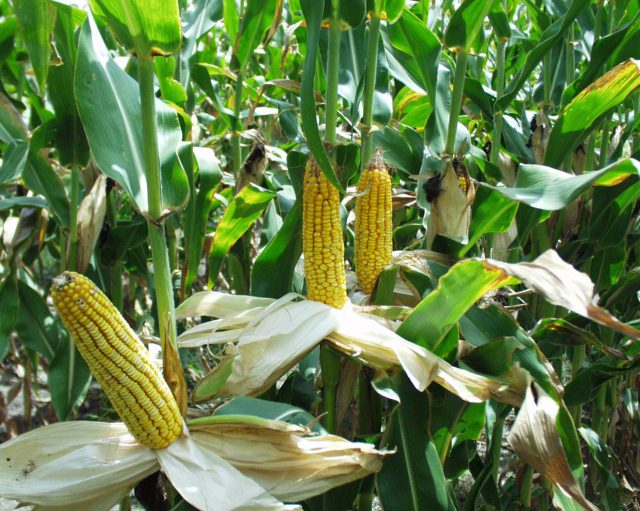
One of the great purported boons of GMOs is that they allow farmers to use fewer pesticides, some of which are known to be harmful to humans or other species. Bt corn, cotton, and soybeans have been engineered to express insect-killing proteins from the bacterium Bacillus thuringiensis, and they have indeed been successful at controlling the crops' respective pests. They even protect the non-Bt versions of the same crop that must be planted in adjacent fields to help limit the evolution of Bt resistance.
But new work shows that Bt corn also controls pests in other types of crops planted nearby, specifically vegetables. In doing so, it cuts down on the use of pesticides on these crops, as well.
Entomologists and ecologists compared crop damage and insecticide use in four agricultural mid-Atlantic states: New Jersey, Delaware, Maryland, and Virginia. Their data came from the years before Bt corn was widespread (1976-1996) and continued after it was adopted (1996-2016). They also looked at the levels of the pests themselves: two different species of moths, commonly known as the European corn borer and corn earworm. They were named as scourges of corn, but their larvae eat a number of different crops, including peppers and green beans.
After Bt corn was planted in 1996, the number of moths captured for analysis every night in vegetable fields dropped by 75 percent. The drop was a function of the percentage of Bt corn planted in the area and occurred even though moth populations usually go up with temperature. So the Bt corn more than counteracted the effect of the rising temperatures we’ve experienced over the quarter century covered by the study.
As the number of moths has gone down, the number of recommended and actual pesticide applications has dropped as well. Green beans and peppers used to require three to six pesticide applications per crop cycle “to ensure marketable quality.” Between 1992 and 2016, the total amount of insecticide applied to New Jersey pepper fields decreased by 85 percent.
Granted, this coincided with the introduction of more effective pesticides that didn’t need to be applied quite as liberally as their forebears. But this study still suggests that much of the decline can be attributed to Bt corn.
There are a couple of practical applications of this work besides vindicating that Bt crops are at least doing what they were engineered to do. One is planning plantings so that that other crops known to be attacked by these same pests—popcorn, potatoes, and sorghum—end up near fields of Bt corn. Another is using these vegetables, rather than non-Bt corn or soy, as the refuges for Bt resistance management that are currently mandated by the EPA.
Pests who eat the non-Bt crops in these refuges have no reason to evolve resistance to the toxin. When they mate with any of their rare colleagues that manage to survive after eating the Bt corn in the next field over, they will likely make baby moths that are still susceptible. This should help preserve the effectiveness of Bt technology—for a while, at least.
But now that the widespread benefits of Bt crop use are known, farmers can plant to both minimize resistance and maximize the benefits.
PNAS, 2018. DOI: 10.1073/pnas.1720692115 (About DOIs).
reader comments
285